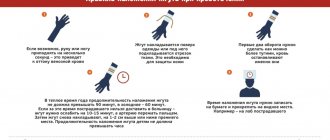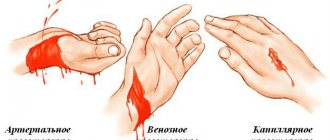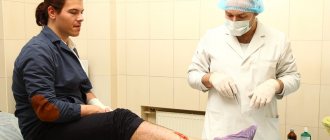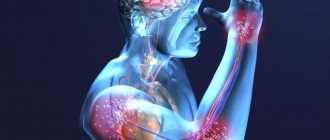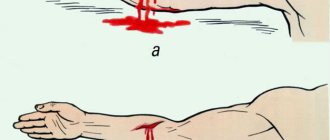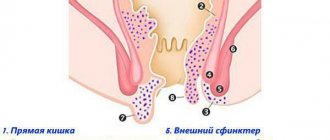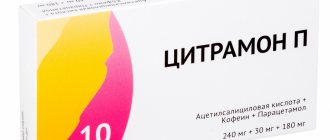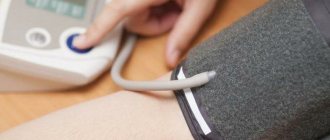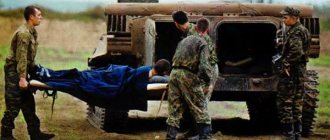**
**
There is little blood -> danger of infection -> wash and bandage
Example: skinned knee
- Any colorless liquid that can be drunk is suitable for rinsing
- for the bandage, clean (relatively) cloth
There is a lot of blood -> danger of blood loss -> pressure bandage
Example: struck a knife on a finger
- if blood continues to ooze, then apply another bandage and press harder
- do not remove the already soaked bandage
Fountain -> very rapid blood loss -> pinch the artery, tourniquet
Places of arterial compression:
- Lower third of the shoulder
- Upper third of thigh
Rules for applying a tourniquet
A tourniquet is applied only in extreme cases (fountain), as it very often causes irreversible damage.
- applied above the wound
- placed on clothing (if there is no clothing, put it on).
- 1 round of the tourniquet - fasten it, then stretch it and apply 3-4 rounds
- Apply the tourniquet quickly, remove it slowly, gradually.
- write the date and time of application of the tourniquet on the forehead (with anything)
- time: in winter - 1 hour, in summer - 2 hours,
- then loosen for 5-10 minutes and apply a tourniquet just above the previous application site
- the tourniquet must be visible!
- check that the tourniquet is applied correctly - there is no pulse in the limb
- see a doctor immediately
What not to do
- Let's not put our hands into the wound!
- We’re not getting anything out of the wound!
- do not remove the already soaked bandage
What to do next
- take the victim to a doctor
- If you are unable to move independently, call an ambulance.
General principles of first aid
If arterial bleeding occurs, first aid should be provided immediately.
The following actions should be taken:
- lift the injured part of the body;
- press the wound with your fingers slightly above the rupture site (a short-term measure, used to reduce blood loss before applying a tourniquet);
- apply a tourniquet, a pressure bandage, or pack the damaged area;
- call an ambulance or independently deliver the victim to a medical facility.
The method of stopping bleeding depends on its location. If the thigh, forearm and arm are injured, it is necessary to apply a tourniquet, after first pressing the artery to the bony protrusion above the damaged area. Pressing is done like this:
- in case of a thigh injury: it is necessary to press with your fist on the upper third of the thigh in the area of the inguinal ligament;
- if the forearm is injured: place several rolls of medical bandage in the elbow bend and squeeze the arm tightly in the joint;
- if an artery in the arm is ruptured: stick your fist into the armpit (you can use a bottle) and press your arm to your body.
Damage to the cervical arteries
There are two large arteries in the human neck: the carotid and the subclavian. Bleeding in this location is stopped by applying a tight wound tamponade.
Latest postsIs it possible to give a mirror: how to protect yourself from bad omensIt became known about the influence of cell phone towers on human healthIs it possible to eat bananas bought in Russia?
The procedure is carried out using tweezers: a sterile bandage or napkins are tightly placed into the wound cavity, after which the damaged area is tightly bandaged.
In the absence of tweezers and a sterile bandage, it is advisable to use a clean handkerchief, previously soaked in alcohol or other strong alcohol. Fingers should also be disinfected with alcohol or hydrogen peroxide.
Regardless of the location of the wound, the patient should be immediately taken to the hospital (or call an ambulance). The effectiveness of pre-medical measures to save a person will depend on the speed of providing professional medical care.
Internal bleeding
- call an ambulance
- cold on the abdominal area
- anti-shock measures
- transport in a sitting position
Signs and symptoms of internal bleeding
- the person becomes weaker, there may be no pain
- paleness, cold sweat, chills
- "floaters before the eyes", dizziness
- breathing is weak, shallow
- swollen, hard, painful belly when pressed, “fetal position”
- there may be a bruise on the stomach
What not to do
- do not anesthetize!
- don't feed
- don't give anything to drink
How to properly apply a hemostatic tourniquet
In order not to harm the victim, it is necessary to approach the process of applying a tourniquet with all responsibility and perform it in accordance with the rules:
- in order to reduce blood flow, the injured limb should be slightly elevated, for example, placed on a rolled up towel;
- to avoid damage to the skin, it is necessary to place a soft cloth under the tourniquet; this procedure will also help reduce pain;
- if the injury is on the leg, then the product must be applied to the thigh area, if the arm is injured, the tourniquet should be attached to the shoulder;
- the tourniquet should be positioned with the concave side inward;
- when pulling the product under the limb, you must ensure that the right side of the tape is slightly longer than the left;
- It is necessary to apply the tourniquet with effort. Each subsequent turn should be slightly weaker than the previous one and should overlap it, which will avoid damage to soft tissues;
- the harness is secured with hooks and a chain located at the ends of the product.
Penetrating chest injury
- close the hole tightly
- apply cold
- not allowed to speak
- breathe deeply
Signs and symptoms of penetrating chest injury
- white or bloody foam at the mouth
- the same one at the wound site
Glue the bag, a piece of plastic with tape or adhesive tape, check: if there is an entrance hole, then there may be an exit hole (in the case of a gunshot wound, it can be 10 times larger than the entrance hole), if it is small, you can seal it.
Technique for performing a hypertensive enema
Indication: swelling of various origins.
Contraindication: acute inflammatory and ulcerative processes in the lower parts of the colon, fissures in the anal area.
Prepare sterile:
- pear-shaped canister or Janet syringe,
- gas outlet pipe,
- medicine,
- 10% sodium chloride solution in an amount of 100-150 ml (dilute 1 tablespoon of table salt in a glass of water),
- latex gloves,
- Vaseline oil,
- tray,
- oilcloth,
- large diaper,
- container with disinfectant solution.
1. Warm the bottle with the medicine in a water bath to 38°C.
2. Fill a pear-shaped balloon with 100 (200) ml of heated solution.
3. Help the patient lie on his left side, the right leg should be bent at the knee and pressed to the stomach (if it is impossible to lay the patient on the left side, the enema is given in a supine position).
4. Place an oilcloth and a large napkin under the patient.
5. Spread the patient’s buttocks and insert the gas tube into the rectum to a depth of 20-30 cm.
6. Attach a pear-shaped balloon to the tube, releasing the air from it, and slowly introduce the heated solution.
7. Disconnect, without unclenching, the pear-shaped cylinder from the gas outlet pipe.
8. Remove the gas outlet tube.
9. Remind the client to try to retain the solution in the intestines for 15-20 minutes.
26 TECHNIQUES FOR APPLYING VENOUS TURNIFIES
Purpose: carried out to reduce venous blood flow to the heart, the volume of circulating blood, especially in situations where it is not possible to carry out drug therapy.
Indications: acute left ventricular failure.
Contraindications: thrombophlebitis, in the acute phase.
Workplace equipment : 3 venous tourniquets.
Execution sequence:
Preparatory stage of performing the manipulation.
- Sit the patient with his legs down for 10-15 minutes (a blood depot is created in the lower extremities, blood flow to the heart decreases).
The main stage of the manipulation.
- Apply two tourniquets simultaneously on both lower extremities, 15 cm below the inguinal fold and on the arm in the upper third of the shoulder. You need to place a napkin under the tourniquet or straighten your underwear.
- Check for the presence of a pulse below the application of tourniquets (arterial pulse should be detected).
- The position of the harnesses changes clockwise every 20 minutes.
- Monitor the general condition of the patient. Monitor the color of the skin below the application of the tourniquets (the color of the skin below the application of the tourniquets should not be pale).
The final stage of the manipulation.
- Remove tourniquets after pulmonary edema has resolved.
27 Assisting a patient with vomiting
Long-term crush syndrome (Crush syndrome)
When a person gets caught in a rubble
- apply a tourniquet above the point of pressure and only then release
- released - tightly bandage the limb and remove the tourniquet
- plenty of warm drinks
- anti-shock measures and urgent hospitalization
This material is part of the School of First Aid course “Space of Safety”. We recommend signing up for classes at the school by calling +7 495 760—9092 or on the website https://www.allsafety.ru
Source: https://www.allsafety.ru/
State Description
Arterial bleeding is a rapid release of blood from a blood artery caused by its damage. Blood flows out of the wound in a pulsating stream in time with the work of the heart muscle.
When small arteries rupture, a person has only 30-60 minutes to stop the bleeding. If large arteries (carotid, femoral) are damaged, loss of consciousness and death can occur within a few minutes.
Arterial bleeding can be external (blood is released outside the body) or internal (blood is released into the abdominal cavity, lungs or muscles).
The consequences of blood loss largely depend on how effectively the compensation mechanisms work:
- Vascular reflex. It comes into effect on the first day after the injury. It consists in the release of adrenaline, which, acting on the vessels, leads to the inclusion of blood deposited in the veins into the general bloodstream.
- Hydremic. Characterized by replenishment of blood flow with intercellular fluid.
- Bone marrow. The production of red blood cells and other blood cells in the spinal cord is activated.
Arterial bleeding is especially dangerous for children and the elderly, since their protective compensation mechanisms work less well.
Distinctive signs of arterial bleeding
In order for first aid for arterial bleeding to be timely and as effective as possible, you should be able to distinguish it from venous bleeding.
Venous bleeding is characterized by the flow of blood in a slow stream that is dark in color. During arterial bleeding, blood flows out in a scarlet, pulsating stream.
- How to apply a tourniquet for arterial and venous bleeding
It is quite simple to stop the flow of blood from a vein by applying a pressure bandage and ensuring the damaged area is in an elevated position. When an artery ruptures, it is very difficult to stop the bleeding. Effective ways to save a person in this case would be finger pressure (temporary measure), application of a tourniquet or tight tamponade.
Sources
- Zideman DA., Singletary EM., Borra V., Cassan P., Cimpoesu CD., De Buck E., Djärv T., Handley AJ., Klaassen B., Meyran D., Oliver E., Poole K. European Resuscitation Council Guidelines 2021: First aid. // Resuscitation - 2021 - Vol161 - NNULL - p.270-290; PMID:33773828
- Gyedu A., Stewart B., Otupiri E., Donkor P., Mock C. First Aid Practices for Injured Children in Rural Ghana: A Cluster-Random Population-Based Survey. // Prehosp Disaster Med - 2021 - Vol36 - N1 - p.79-85; PMID:33491619
- Singletary EM., Zideman DA., Bendall JC., Berry DA., Borra V., Carlson JN., Cassan P., Chang WT., Charlton NP., Djärv T., Douma MJ., Epstein JL., Hood NA ., Markenson DS., Meyran D., Orkin A., Sakamoto T., Swain JM., Woodin JA., De Buck E., De Brier N., O D., Picard C., Goolsby C., Oliver E ., Klaassen B., Poole K., Aves T., Lin S., Handley AJ., Jensen J., Allan KS., Lee CC., De Buck E., De Brier N., O D., Picard C ., Goolsby C., Oliver E., Klaassen B., Poole K., Aves T., Lin S., Handley AJ., Jensen J., Allan KS., Lee CC. 2021 International Consensus on First Aid Science With Treatment Recommendations. // Resuscitation - 2021 - Vol156 - NNULL - p.A240-A282; PMID:33098920
- Singletary EM., Zideman DA., Bendall JC., Berry DC., Borra V., Carlson JN., Cassan P., Chang WT., Charlton NP., Djärv T., Douma MJ., Epstein JL., Hood NA ., Markenson DS., Meyran D., Orkin AM., Sakamoto T., Swain JM., Woodin JA., De Buck E., De Brier N., O D., Picard C., Goolsby C., Oliver E ., Klaassen B., Poole K., Aves T., Lin S., Handley AJ., Jensen J., Allan KS., Lee CC., Schmölzer GM., Morley PT., Nieuwlaat R., Lang E. 2021 International Consensus on First Aid Science With Treatment Recommendations. // Circulation - 2020 - Vol142 - N16_suppl_1 - p.S284-S334; PMID:33084394
- Chang KC., Huang YK., Chen YW., Chen MH., Tu AT., Chen YC. Venom Ophthalmia and Ocular Complications Caused by Snake Venom. // Toxins (Basel) - 2021 - Vol12 - N9 - p.; PMID:32911777
- Coughlin DJ., Boulter JH., Miller CA., Curry BP., Glaser J., Fernandez N., Bell RS., Schuette AJ. An Endovascular Surgery Experience in Far-Forward Military Healthcare-A Case Series. // Mil Med - 2021 - Vol185 - N11-12 - p.2183-2188; PMID:32812042
- Sumardino S., Widodo., Poddar. Analysis of pre hospital emergency management in case of head injury. // Enferm Clin - 2020 - Vol30 Suppl 5 - NNULL - p.228-233; PMID:32713577
- Goolsby C., Rojas LE., Rodzik RH., Gausche-Hill M., Neal MD., Levy MJ. High-School Students Can Stop the Bleed: A Randomized, Controlled Educational Trial. // Acad Pediatr - 2021 - Vol21 - N2 - p.321-328; PMID:32473216
- Menger R., Lin J., Cerpa M., Lenke LG. Epidural hematoma due to Gardner-Wells Tongs placement during pediatric spinal deformity surgery. // Spine Deform - 2021 - Vol8 - N5 - p.1139-1142; PMID:32314179
- Zhao YF., Zhao JY., Hu WZ., Ma K., Chao Y., Sun PJ., Fu XB., Zhang H. Synthetic poly(vinyl alcohol)-chitosan as a new type of highly efficient hemostatic sponge with blood -triggered swelling and high biocompatibility. // J Mater Chem B - 2021 - Vol7 - N11 - p.1855-1866; PMID:32255048
